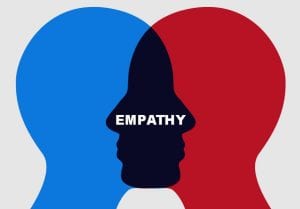We have not been listening to the needs of the poor…
Many times volunteers enter an underdeveloped country without any idea of what they really need. There is poor communication and not enough research done before trying to help. In order to make the most efficient use of resources and time, aid groups need to talk to and understand the people in need. It is so important to put yourself in their shoes because they know best what they need!
Here are some examples of how volunteers have failed to listen up:
- Mosquito nets meant for preventing malaria end up being used for fishing

- What is one of the most common words associated with Africa? Malaria. So when people want to help in Africa, one of their first thoughts is to combat the issue of malaria. So mosquito nets were created as a cheap way
to keep mosquitoes away from humans while they sleep. However, many villages found the nets more useful for the purpose of fishing rather than keeping the mosquitoes away.
- What is one of the most common words associated with Africa? Malaria. So when people want to help in Africa, one of their first thoughts is to combat the issue of malaria. So mosquito nets were created as a cheap way
- Clean cookstoves made to help poor villages
- New cookstoves were created by aid groups with the intention of burning less fuel and producing less smoke. However when they were brought to villages in India and Africa, the people did not find them useful. In fact, studies have shown there were no improvements in health outcomes nor the amount of wood consumed with these stoves. Therefore, money and resources were wasted on what was thought to be a cleaner and better technology for these communities, but actually failed.
Communication has definitely improved, and aid programs have altered their approach to be more beneficial to the communities in need. As Polak wrote, we need to “transform the way design is taught in developed countries to embrace design for the other 90% of world’s population,” meaning that the products designed for underdeveloped countries need to be more specifically tailored to these communities to be as effective as possible. Currently these great ideas being designed are not always necessary for the country.
TED talk by Ernesto Sirolli: Want to help someone? Shut up and Listen
The most effective way to help someone is to listen. The first and most important step is to learn what they feel, think, and experience.
 “This process involves observing, engaging, and empathising with the people you are designing for in order to understand their experiences and motivations, as well as immersing yourself in their physical environment in order to have a deeper personal understanding of the issues, needs and challenges involved.”
“This process involves observing, engaging, and empathising with the people you are designing for in order to understand their experiences and motivations, as well as immersing yourself in their physical environment in order to have a deeper personal understanding of the issues, needs and challenges involved.”
https://www.interaction-design.org/literature/article/design-thinking-getting-started-with-empathy
Click the quotes to read more about them:
“Universities cannot simply hand over knowledge or discoveries. They must ask what partners need and invite them to co-lead the exploration for solutions.” –Mehta’s Solving Problems That Matter
How To Listen UP!
 Talk to people: ask questions and listen
Talk to people: ask questions and listen- Immerse yourself in a community, observe and learn about the way they live — cultural understanding
- Go in with an open mind
- Be prepared to possibly change ideas and designs if they originally are not helpful
The Transformation:
Many groups have recognized the faults in their programs, and they have altered the way they approach these volunteer situations. People are starting to listen more to those in need, for example:
- Students from a university working on a project to help a Guatemalan community linked up with students in Guatemala to effectively communicate through the design process. Each student was paired up to talk to the students to fully understand the needs of the community. (Polak’s Out of Poverty)
- A humanitarian aid group spent 18 months building relationships with partners before even making a plan for the project. They believe this time spent on effective communication will make them on target to achieving their goal. (Lasker’s Hoping to Help)
Grace Gardella and Megan Fennell

